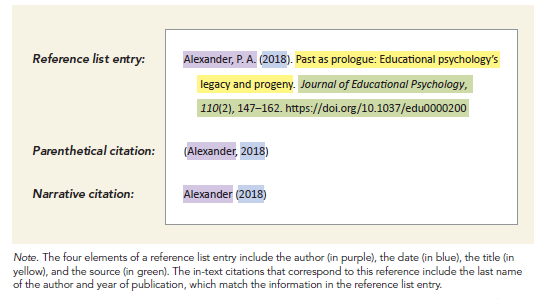A paraphrase restates another’s idea (or your own previously published idea) in your own words. Paraphrasing allows you to summarize and synthesize information from one or more sources, focus on significant information, and compare and contrast relevant details.
Published authors paraphrase their sources most of the time, rather than directly quoting the sources; student authors should emulate this practice by paraphrasing more than directly quoting.
When you paraphrase, cite the original work using either the narrative or parenthetical citation format.

In-text citations may be parenthetical or narrative.
- In parenthetical citations, use an ampersand (&) between names for a work with two authors or before the last author when all names must be included to avoid ambiguity.
- In narrative citations, always spell out the word “and.”
Paraphrasing is a valuable skill because...
- It is better than quoting information from an undistinguished passage.
- It helps you control the temptation to quote too much.
- The mental process required for successful paraphrasing helps you to grasp the full meaning of the original.
6 Steps to Effective Paraphrasing
- Reread the original passage until you understand its full meaning.
- Set the original aside, and write your paraphrase on a note card.
- Jot down a few words below your paraphrase to remind you later how you envision using this material. At the top of the note card, write a key word or phrase to indicate the subject of your paraphrase.
- Check your rendition with the original to make sure that your version accurately expresses all the essential information in a new form.
- Use quotation marks to identify any unique term or phraseology you have borrowed exactly from the source.
- Record the source (including the page) on your note card so that you can credit it easily if you decide to incorporate the material into your paper.
from: https://owl.purdue.edu/owl/research_and_citation/using_research/quoting_paraphrasing_and_summarizing/paraphrasing.html

